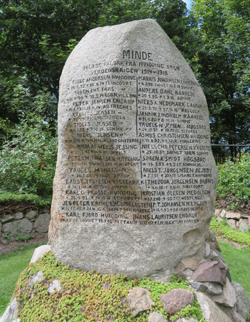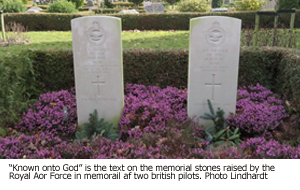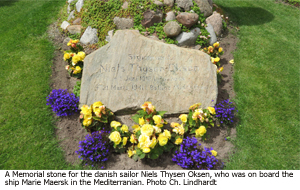During the Viking Era and Middle Ages, the area around Hviding Kirke was an important trading area with manor farms and the discharging of ships from Hviding Nakke.
Traces of the Border Period near Hviding Church
From 1864 to 1920, the parish of Hviding Sogn belonged to Prussia.
Part of Preußen
From 1864 to 1920, the parish of Hviding Sogn belonged to Prussia. During WWI the parish had to hand the church bell over to the German state, as it had run out of metal for the production of munitions. Following the Reunification, the Danish state donated 60 Reunification bells, cast from cannons, to churches in Southern Jutland, including that in Hviding.
Behind the church, there is a memorial stone commemorating the death of 26 parishioners during WWI. Four of the names are repeated on a gravestone raised in memory of brothers Laurits, Niels, Truels and Peder Jensen, all of whom died in France.

 During WWII the bodies of two British pilots drifted ashore in September 1944: However, they could not be buried until 29 July 1945 due to the war.
During WWII the bodies of two British pilots drifted ashore in September 1944: However, they could not be buried until 29 July 1945 due to the war.

There is also a memorial stone in commemoration of Niels Thysen Oksen, a Danish voluntary sailor in the British Navy who was killed in 1941, when an Italian bomber sank the battle ship he was on in the Mediterranean.
